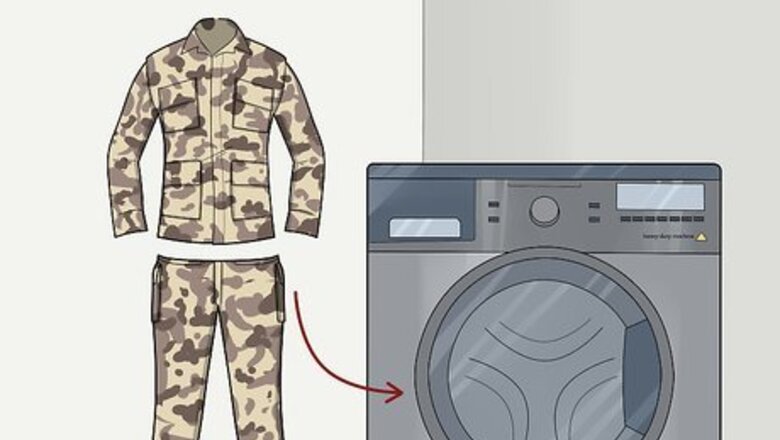
views
Laundering Combat Uniforms
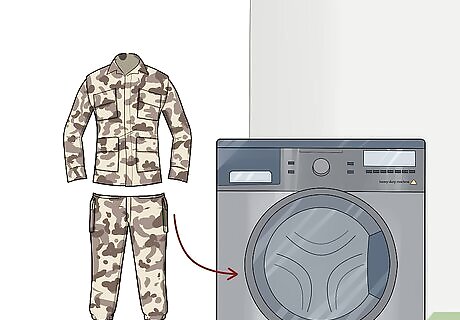
Wash your combat uniform separate from other clothes. Washing a combat uniform with other articles of clothing can cause the uniform to absorb their colors or dirt, so always launder a uniform on its own. Place your combat uniform in an empty washing machine. This process applies to basically every branch of the military, although you should always refer to your military handbook for specific directions regarding special uniforms. While you shouldn’t wash a combat uniform with other clothes, you can certainly wash it with other combat uniforms so long as they’re the same color.
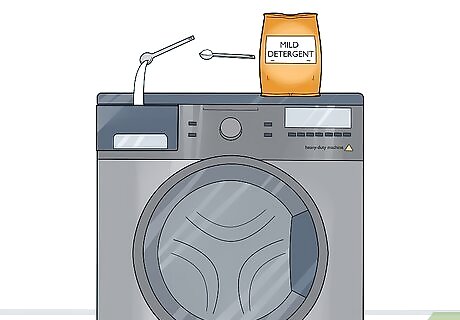
Add 1–2 teaspoons (4.9–9.9 mL) of mild detergent to the machine. You do not need a lot of laundry detergent to clean your uniform. Add 1–2 teaspoons (4.9–9.9 mL) of detergent based on how dirty your uniform is. This is usually 1/5-1/4 of a cap if you’re measuring the detergent out by eye.Warning: Never use bleach, specialty cleaners, or brightening agents. Combat uniforms are usually treated with permethrin, which kills lice, mites, and other pests you may encounter when you’re on duty. Any cleaning agent outside of standard laundry detergent can compromise the permethrin that’s built into the fabric.
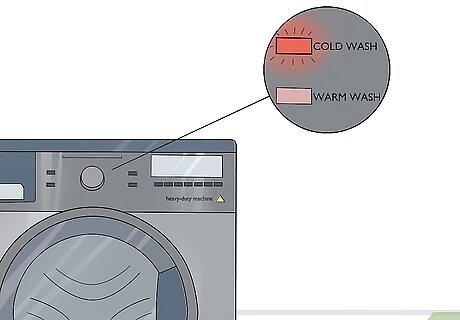
Set your machine to the cold water setting. Turn the dial on your washing machine to set it to the coldest setting available. Due to the fact that the permethrin in the fabric can be damaged or removed with heat, you cannot use hot water to wash your uniform.

Choose the normal or permanent press cycle to wash your clothes. Set the machine to a standard or normal wash cycle if your uniform is especially dirty. Use the permanent press cycle if the uniform isn’t caked in mud and dirt, since permanent press isn’t as hard on your clothes as a normal wash setting. Turn your washing machine on and let it run until the cycle is finished. Unless you have a lot of time on your hands, hand-washing a combat uniform isn’t really an option. It will take a lot of elbow grease to remove dirt from a well-worn combat uniform.
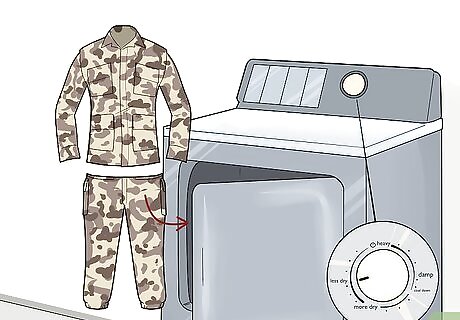
Dry your uniform in the dryer on low heat to dry it quickly. You can use a dryer to dry your combat uniform if you need it for the next day or are short on time. Dry it separately from other clothes on a low-heat setting. To protect the permethrin, your uniform must not get hotter than 130 °F (54 °C), so avoid using a regular or high-heat dryer setting. Never dry clean a combat uniform. The chemicals used for dry cleaning are not designed to preserve permethrin.

Air dry your uniform on a plastic or wood hanger to avoid wrinkles. If you don’t need the uniform right away, air drying is the best option. Every military handbook requires unwrinkled and neat uniforms, and air drying ensures that wrinkles won’t form on the fabric. Use a plastic or wood hanger to hang your shirt, and hang the pants on the bottom bar of a separate hanger. Wait 2-4 hours for your uniform to dry. Never use cornstarch or an iron. The compounds in cornstarch and the heat from an iron will destroy the permethrin in your uniform. If your uniform is wrinkled and you’re in a pinch, hang it in the bathroom and turn the shower on and turn the handle to make the water as hot as possible. The steam will remove the wrinkles after 15-30 minutes.
Cleaning Formal Uniforms
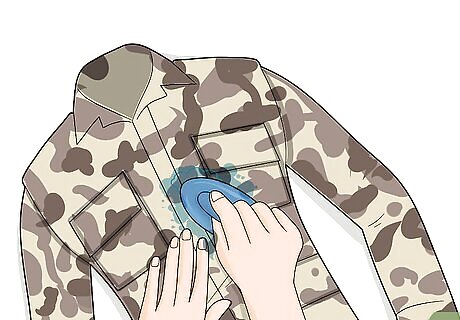
Spot-clean dress uniforms with a dry brush or damp sponge. If your formal uniform is wool or polyester, use a soft-bristled dry brush or lint roller to remove residue or dirt. For satin uniforms, use a clean, damp sponge to wipe away any stains, spills, or dirt. Cleaning dress uniforms can be kind of a pain depending on what type of uniform it is, so address minor issues as quickly as you can to avoid the need for a deeper cleaning.Tip: There is some variation in how you’re supposed to clean different formal uniforms, so consult your specific branch’s military handbook to find laundering instructions for special uniforms.
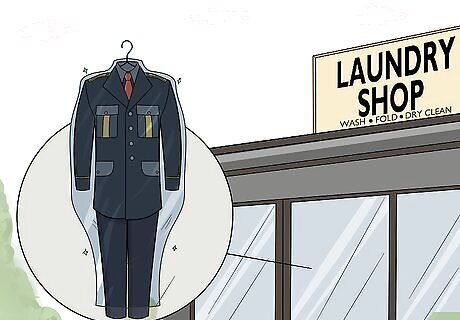
Have your formal uniform professionally dry cleaned if it’s especially dirty. If your formal uniform really needs a thorough cleaning, your only real option is to get it dry cleaned. Remove any medals, pins, lapels, and insignias and take your dress uniform to a dry cleaner that’s familiar with cleaning military uniforms to restore it to its former glory. Never hand- or machine-wash a formal uniform. Formal uniforms usually have delicate linings and creases that can be ruined if they’re submerged in water. Not every dry cleaner can handle formal Army uniforms. There are usually dry cleaners near (or in) military bases if you’re at one. Alternatively, call a civilian dry cleaner ahead of time to see if they’re capable of cleaning military uniforms.

Avoid dry cleaning formal uniforms more than once every 3 years. This is particularly important if your uniform has any satin or permanent patches. Most formal uniforms are not intended to be worn frequently, and thus do not withstand frequent cleaning very well. To ensure that you don’t damage your formal uniform, avoid dry cleaning your formal uniform more than once every couple of years. Store your formal uniform in a clean suit bag and keep it in a cool, dry location to keep it safe.
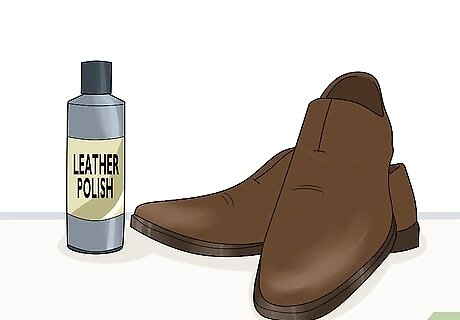
Use a high-quality leather polish to remove scuff marks from shoes. You do not need to clean your military-issued dress shoes unless there are scuff marks. Wipe surface dirt away with a soft brush and apply the polish with a rag or polishing brush. Use smooth circular motions until your shoes are clean and the scuff marks are gone. Use a soft cloth to buff the shoes and restore their shininess. A soft wipe with a clean cloth is more than enough to wipe off surface dirt or dust.
Caring for Special Parts of a Uniform
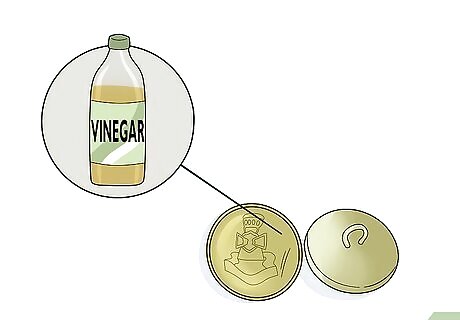
Remove green residue from buttons using vinegar or Worcestershire sauce. Over time, the buttons on some military uniforms may turn a dull shade of green as the pewter wears off and the copper becomes oxidized. To remove this green discoloration, dip a cotton swab in some white vinegar or Worcestershire sauce. Gently rub the affected surface until the green buildup is gone. Then, wipe the button with a damp cloth to remove the excess cleaner. You can still wear an item of clothing even if the pewter plating has been worn down. The green discoloration often looks quite bad though, so you should clean it as soon as possible.

Clean metal insignias and medals using dish soap. Metal insignias and medals are fairly strong and water-resistant. If you need to clean them or restore their shine, wash them by hand with some warm water and dish soap. Gently squirt a dollop of soap into a clean sponge and wipe them clean under a steady stream of warm water.Warning: Don’t compulsively clean your insignias and medals if they don’t need it. Excessive cleaning may wear away some details or intricate designs.
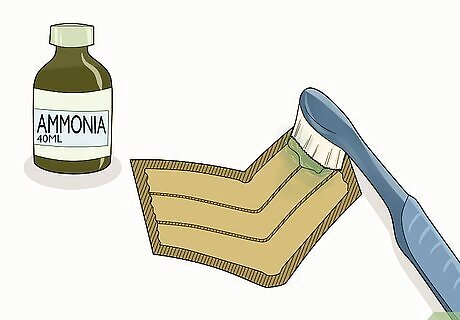
Restore embroidered insignias with a nail brush and ammonia solution. Put on some rubber gloves and get a cleaning solution made with diluted ammonia. Put on some rubber gloves and dip a clean nail brush into the ammonia solution. Apply the cleaning agent to the surface of the insignia to remove any tarnish or corrosion. Wipe the insignia with a damp cloth when you’re done. Unless you spill coffee or something, you shouldn’t need to clean your embroidered insignias. They don’t tend to pick up dirt very easily.
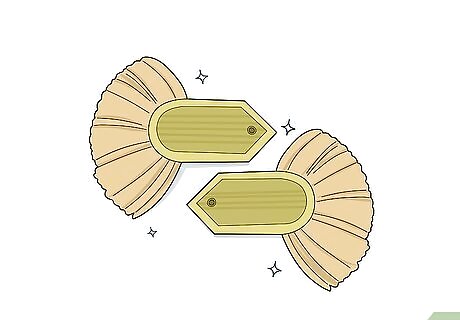
Have gold lace cleaned and restored by a reputable tailor. Gold epaulettes, lace, and lining cannot be cleaned without the help of a tailor. These gold fibers are extremely sensitive and require a delicate chemical treatment to be cleaned. Generally speaking, you should rarely need to clean these parts of a uniform, but if you do, take them to a tailor. Like dry cleaners, some tailors will not have the skills or tools necessary to clean gold military-grade lace. Contact tailors ahead of time before taking them in for a cleaning.



















Comments
0 comment